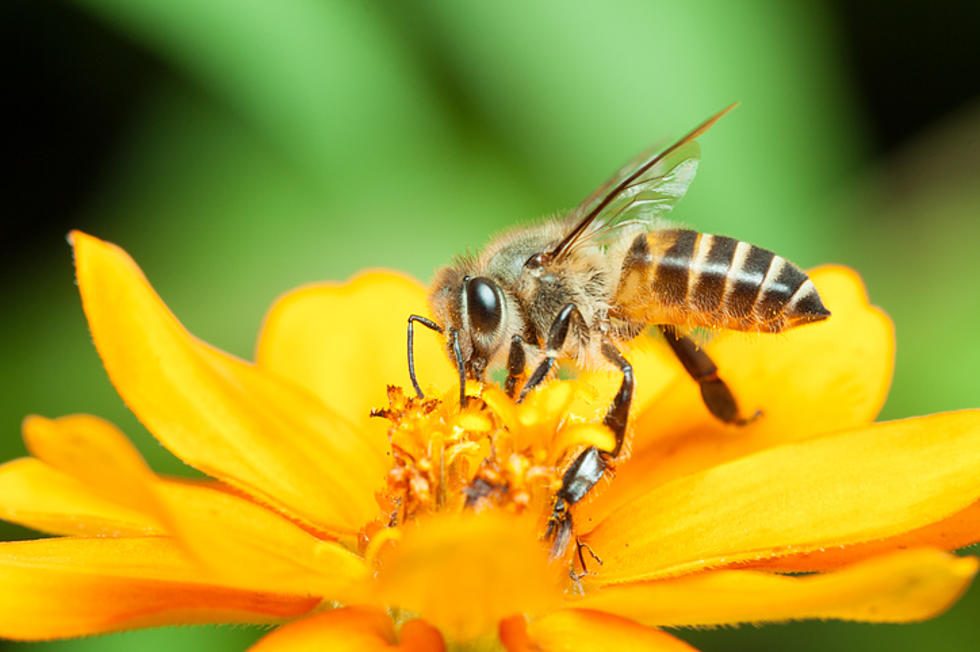The role of bees
Bees play a paramount role at the centre of their ecosystem and their importance is often overlooked. As pollinators, bees encourage the rise of biodiversity in several ways, and their decline could lead to lack of fertilisation in plants thus having a knock on effect on the fruit, vegetables and seeds produced by these plants. They are also very good indicators of environmental health. It is estimated one third of the food consumed by people every day relies upon the pollination of plants by bees and therefore the probable extinction of bees could lead to disruption of the food chain of people, predators of bees and also the habitats of insects that are pollinated by bees. This would reduce biodiversity dramatically and create big problems for all members of these ecosystems.
Bees collect nectar from plants as their food source. As bees collect the nectar, pollen from the stamen (male plant reproductive organ) of the plant attaches to the hairs of the bee. When the bee visits the next plant this pollen is scattered onto the stigma (female plant reproductive organ) of the plant, resulting in fertilisation allowing the plant to produce fruit containing seeds.
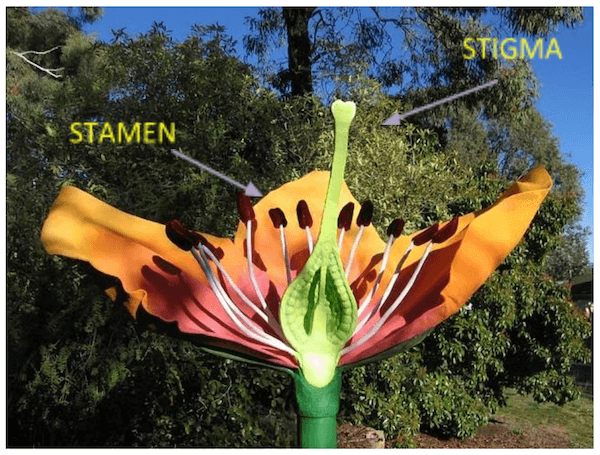
The roles of the queen bee are responsible for ensuring the survival of the entire colony. The queen bee encourages a strong and productive hive by producing chemical scents that regulate unity within the colony. She is the largest bee in any hive and the only female with fully developed ovaries allowing her to pursue arguably her most important role of laying eggs. The queen bee is entirely incapable of tending to her own basic needs and she relies upon attendants to groom and feed her so she is able to fulfil her full egg laying capability (up to 1500 eggs a day). Despite her position in the pecking order she is a very docile creature and will not usually sting people. She will only use her stinger to kill rival queens that emerge from birth or that are introduced to the hive.
Types of bees in the UK
Bumble bee
Bumble bees are generally robust and have a larger circumference than most other bees in the UK. They tend to have up to three yellow bands and can have a white, red or uniform tail but will curl up to hide these distinguishable markings. Bumble bees live in colonies and usually reside in temperate regions within nests in the ground. They live in regions with a temperate climate but can also withstand higher altitudes.
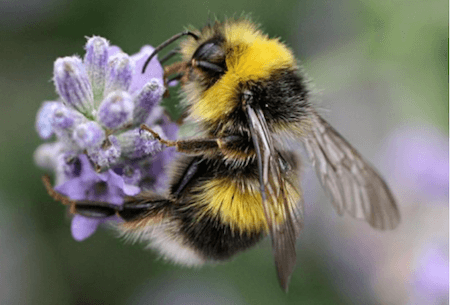
Honey Bees
Honey bees are usually around 15mm long and are oval shaped, they have gold and brown bands on their abdomen and predominantly black bodies. These bees thrive in natural and domesticated environments where flowering plants are abundant and they build nests inside tree cavities and under edges of objects to avoid predation.
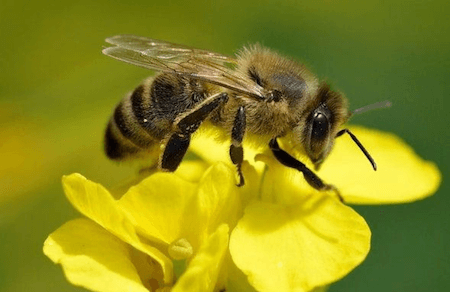
Mason Bees
Mason bees are generally black with similar distinctive markings to both bumble bees and honey bees but with slimmer bodies. They have a habit of constructing their nests within masonry products such as brickwork, wood and walls; this is what gives them their name.
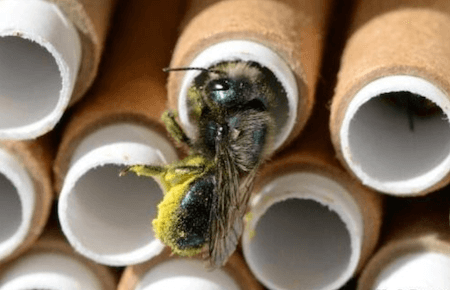
Mining Bees
A Mining bee’s appearance can range from dark and fluffy orange to a pale fluffy yellow. These bees burrow into the ground to nest and leave small piles of earth of the ground as a result of this. Generally, mining bees can live in all environments ranging from quarries to gardens.
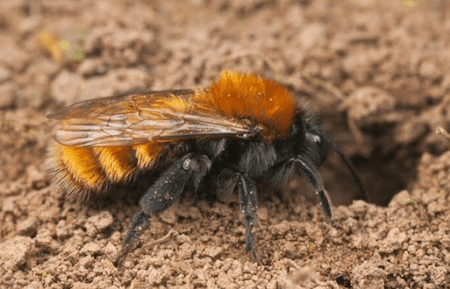
The Role of Bees in the food chain
What do they eat?
The diet of bees consists of two parts both produced by flowers; Bees eat pollen which is their protein source and they drink nectar (a sugary liquid). Honey bees tend to eat the honey they produce and it forms their energy source.
Predators of bees
A wide range of insects, reptiles, birds and animals eat bees. Tropical predators such as ants, wasps, hornets and larger organisms such as honey badgers and skunks can all destroy entire colonies and they do this by smashing into the hive. Some would also argue humans are predators to bees in a secondary nature as humans are a leading cause for loss of habitat and flowering plants.
The difference between bees and wasps
Bees and wasps are physically quite similar; both with bullet shaped bodies and wings, it is thought bees are evolved from predatory wasps. However, they both constitute some 20,000 species each meaning there is enough to set them apart.
Honeybees sport a light coat of hair to assist the pollination process; whereas wasps are essentially hairless making them aerodynamic which is more suitable for the hunting of other insects. This demonstrates that all species of bees are adapted for making honey and wasps are not. Similarly to bees, wasps also have a “queen” who will single handedly build the nest , whereas worker bees create and maintain beehives. Unlike bees who risk death when they sting, wasps are capable of stinging multiple times and are not at risk of death.
Hibernation
The average lifespan of a bee is estimated around 122-152 days. Bees living around the winter months go into hibernation. For many species the only surviving member of a colony following winter is the queen bee who will repopulate and re-establish the colony in spring. Queens will hibernate alone underground by utilising their vital fat stores to keep them alive during winter. However, this is not the case for honey bees that remain active throughout the winter despite harsh conditions and lack of flowering plants. Honey bees use the honey they produce to provide them with energy to overcome this problem.
Natural products of bees
Honey
Honey begins as nectar originating from flowers; it is collected by bees and further broken down into simple sugars which are stored within the honeycomb of nests. The structure of the honeycomb and the fanning of the wings of bees both contribute to evaporation, forming liquid honey.

Beeswax
Beeswax is produced by bees to build comb which is used to house larvae and store honey. The glands of worker bees convert the simple sugar content of honey into wax which passes through the small pores of bees producing tiny flakes of wax on their abdomen. Bees then chew these pieces of wax until soft and mouldable and will add this to the honeycomb during construction.
The causes of bee decline
Pesticides
In inorganic farming, pesticides are applied to crops to kill and control pests. However, they can also result in considerable harm to bees by blocking neural pathways in their central nervous system. This results in disorientation, an inability to feed and death. The issue with these pesticides is that they are systematic pesticides. Once seeds are treated with them, every part of the plants organic tissue will take it up as it grows; meaning a bee can consume a toxic dose a long time after plant treatment. These pesticides also spread to contaminate soil, air, water and nearby hedges.
Varroa Mite
Arguably the biggest threat to honey bees is the Varroa Mite. They attach themselves to honey bees and suck their blood. When the honey bee returns to the hive the mite spreads viruses and disease among the hive affecting large portions of the colony. Once the Varroa Mite enters the hive it can kill off an entire colony in three years.
Habitat Loss
Significant change in land also poses a threat to bees. As cities develop, bees are losing wild spaces where they are able to find flowering plants and food which causes a profound impact on their population as many struggle to survive.
How can we help bees?
Planting Flowers
Pollen rich flowering plants are essential for the survival of bees all year round. Planting flowers to provide sustenance throughout the year is cruitial; such as crocuses, hellabone and primulas in spring, poppies and cosmos in summer and sedums and golden rod in autumn. During winter honey bees are the only bees which are still active, they have smaller tongues so prefer shallow flowers as it makes it easier for them to get nectar; lavender, salvia and buddleia fit this category. Generally, Echinacea are excellent for pollinators as they are rich in nectar from summer through to autumn.
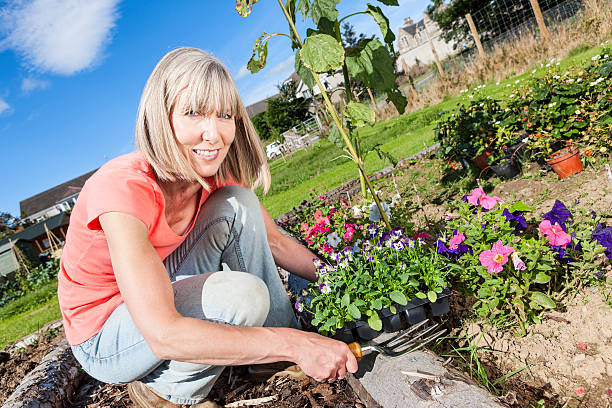
Making your garden bee friendly
- By filling a shallow dish with pebbles and water. This will allow bees to land on the pebbles and drink water in break from foraging and pollinating; this will prevent bees from drowning.
- By cutting grass less often. Slightly longer grass provides bees with shelter and a place to feed.
- Discontinuing the use of pesticides in domestic gardens will stop bees being poisoned, but can be replaced with the use of gloves to strip pests from plants.
- A solution of sugar and water (half and half mixed well) will give energy to exhausted bees and allow them to continue their journey.
- Creating ideal accommodation for bees by making a bee house using short sticks of bamboo, dry logs and soft crumbly mortar and place out of direct sunlight.
What to do if you’re stung by a bee
Bees are not aggressive creatures but they can sting; however this essentially leads to their death so it’s a last resort for them. It’s important to stay still to avoid a sting or to put your body part against some flowers/greenery to allow it to walk away. If stung by a bee, do not swat it off as it will tear off the tail of the bee along with its sting resulting in death. Instead avoid touching it and allow it to pull the sting out itself and fly away.
Supporting Bee Keepers
The easiest way to do this is to buy locally-made honey and beeswax products. Many beekeepers use the products of their hives to create lotions, soaps and beeswax candles and it is also possible to contact your local beekeeping society to purchase these products. Alternatively you can “adopt a beehive” through the British beekeepers association to support the environmental and educational projects to have save the bees.
